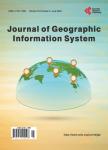Assessing the Spatial Equality of COVID Testing Sites Maintaining Zero COVID Policy
Assessing the Spatial Equality of COVID Testing Sites Maintaining Zero COVID Policy作者机构:College of Geography and Environmental Science Henan University Kaifeng China Key Laboratory of Geospatial Technology for Middle and Lower Yellow River Regions Ministry of Education Henan University Kaifeng China INTI International University Nilai Malaysia College of Urban and Environmental Sciences Northwest University Xian China Shaanxi Key Laboratory of Earth Surface System and Environmental Carrying Capacity Xian China
出 版 物:《Journal of Geographic Information System》 (地理信息系统(英文))
年 卷 期:2024年第16卷第3期
页 面:183-200页
学科分类:0202[经济学-应用经济学] 02[经济学] 020205[经济学-产业经济学]
主 题:COVID-19 Testing Sites Spatial Disparities Spatial Equality Guangzhou City Accessibility
摘 要:Rapid and timely testing is essential to minimize the COVID-19 spread. Decision makers and policy planners need to determine the equal distribution and accessibility of testing sites. This study mainly examines the spatial equality of COVID-19 testing sites that maintain a zero COVID policy in Guangzhou City. The study has identified the spatial disparities of COVID testing sites, characteristics of testing locations, and accessibility. The study has obtained information on COVID testing sites in Guangzhou City and population data. Point pattern analyses, Euclidian distance and allocation, and network analyses are the main methods used to achieve the research objectives, and 1183 total COVID testing sites can be recognized in Guangzhou City. Results revealed that spatial disparities could be noticed over the study area. Testing locations of Guangzhou City are highly clustered. The most significant testing sites are located in Haizhu District, which has the third largest population. The highest population density can be identified in Yuexiu District. However, only 94 testing sites are located there. According to all the results, higher disparities can be identified, and a lack of testing sites is located in the north part of the study area. Some people in the northern part have to travel more than 10 km to reach a testing site. Finally, this paper suggests increasing the number of testing sites in the north and south parts of the study area and keeping the same distribution, considering the area, total population, and population density. This kind of research will be helpful to decision-makers in making proper decisions to maintain a zero COVID policy.



